In Belgium, the home of the European Parliament and the heart of the EU’s bureaucratic apparatus, June 9th will see voters turn out for both the European Parliament (EP) elections and Belgian federal elections. The outcome of the elections will have a major impact on the country, with many voters in the Flanders region supporting greater regional independence and a less powerful federal government. Desire for a higher degree of independence for Flanders is not new.
However, the far-right, Flemish-nationalist party, Vlaams Belang has grown in popularity since 2018 and now has the most support of any party in the region. It’s also projected to gain the most seats of any Belgian party in the European Union. This is a development that highlights that the presence of strong radical-right parties is now commonplace in EU countries. Read on to find out what drives this electoral outcome and where other key parties stand ahead of June 9th.
Belgium’s political and social dynamics since 2019
More or less power for the federal government?
Ahead of the federal elections, the Belgian parliament decided which articles of the constitution could be amended by the next parliament, which will be established following federal elections. The parliament’s selection raised the stakes for the June elections by selecting Article 195 as open for revision. Article 195 allows for there to be amendments of the entire constitution, which could translate into a change in the balance of power between the federal government and Belgium’s three regions: Flanders, Wallonia, and the capital-region of Brussels. Depending on who sits in the next parliament, the federal government could gain power or lose power to the regional level. More regional independence is strongly desired in Flanders. And current polls indicate a big win for the parties calling for greater Flemish independence.
How could this impact the EP elections? In Flanders, it likely means that support for the nationalist Vlaams-Belang will be high on the European level, as well as the federal level. In Wallonia, the parties belonging to the political centre and which do not advocate for increased regional independence will likely gain more support. However, with Flanders accounting for a much greater share of the population, the EP election will be heavily influenced by how citizens in Flanders vote.
Dealing with the Israel-Gaza war
Another issue on the minds of Belgian voters is the ongoing conflict in Gaza and Israel’s treatment of Palestinians. Following reports of violence against Palestinians living in occupied territories in the West Bank, PM Alexander De Croo has pushed for a ban on imports from the territories occupied by Israeli settlers. He is also seeking support from other EU countries so that a potential ban would have a stronger impact on the economy of these territories. The EU is the largest trading partner for Israel and import bans could be an impactful way to signal disapproval over violence against Palestinians.
In the EU, Belgium has been an outspoken critic of Israel’s military operations in Gaza, which have come at the expense of Palestinian civilian life. De Croo has imagined a future in which Belgium and—European countries more widely—will have to face the question of their inaction against human rights violations.
The degree to which the Israeli military operation in Gaza will impact the upcoming elections is unclear. Students and progressives are likely to support parties which are willing to criticise Israeli violence against Palestinians. However, these demographics are already aligned with the centre-left and left-wing, meaning the ongoing conflict in Gaza is unlikely to translate into a major shift in electoral support in Belgium.
Last election results overview
Like the upcoming June elections, Belgium’s last federal elections in 2019 also took place at the same time as the EP elections. Then, the conservative Flemish separatist party, New Flemish Alliance, N-VA won the greatest share of the vote with 16 percent. The far-right, Flemish nationalist party, Vlaams Belang (VB) came in second, with about 12 percent. These two parties also came in first and second in the EP elections, with N-VA receiving 14 percent of the vote and VB 12 percent.
At the federal level, the centre-left Socialist Party (PS) ended with 9.5 percent support, placing third. However, in the EP elections, Open Flemish Liberals and Democrats (Open Vld) came in third with just over 10 percent of the vote and PS came in fourth with just under 10 percent.
In the federal election, Open Vld, the party of PM De Croo, came in sixth with 8.5 percent support. Both the centre-right Christian Democratic and Flemish Party (CD&V) and the left-wing Worker’s Party of Belgium (PVDA-PTB) received more support than Open Vld at the federal level. Those parties received 8.9 percent and 8.6 percent, respectively in the federal elections. At the EP level, CD&V and PVD-PTB came in fifth and sixth, with just over 9 percent support for CD&V and about 8.5 support for PVDA-PTB.
The liberal, French-speaking political party Reformist Movement (MR) came in seventh in the federal elections with 7.6 percent support. In the EP elections, however, they won the least amount of support of all parties that gained representation in the EP, ending with 7 percent. Both the Flemish Green Party, Groen and the French-speaking Green Party, Ecolo, gained more support than MR in the EP elections, receiving 7.8 and 7.3 percent respectively. The green parties performed more poorly on the federal level, with both receiving about 6 percent. The Flemish social democratic party, Vooruit, had slightly higher support than the green parties on the federal level, gaining 6.7 percent of the vote.
Though there was a certain degree of discrepancy with the results from the federal and EP elections, the outcomes broadly aligned. The Greens did slightly better at the EP level, yet the Socialist party, who gained almost identical levels of support, translated to different outcomes on the federal and EP levels due to variation in support for other parties and the limited number of Belgian EP seats.
Key political actors and their outlook
Less than a month before Belgians go to the polls, this is where the key political parties stand.
In the French-speaking region, Wallonia, which holds just a third of the country’s population, the S&D affiliated, Socialist Party (PS) leads with 24 percent support, followed by the liberal-conservative Reformist Movement (MR) with 21 percent. The left-wing Workers’ Party sits at 16 percent, the centrist Les Engagés (LE) are polling around 14 percent, and the green Ecolo party is at 13 percent. Finally, there is the social-liberal French interest party DéFI at four percent.
In the more densely populated region of Flanders, the political dynamics are quite different. There, the right-wing and radical-right have become popular in recent years. The far-right Vlaams Belang (VB) currently has around 26 percent support according to recent polling, a huge upward swing since 2019, which already saw the party gain 15 points from the last election. VB is followed by the right-wing, Flemish nationalist party, New Flemish Alliance (N-VA), which sits at 21 percent. Rounding out the right-wing, the centre-right CD&V is tied for third place, polling at 12 percent. Also at 12 percent is the centre-left party, Vooruit. The left-wing Flemish branch of the Workers‘ Party (PVDA) currently sits at 11 percent. Just below that, at 10 percent, is the centre-right Open Flemish Liberals and Democrats (Open Vld). Finally, there are the Greens, Groen, who are polling at six percent.
The third region in Belgium is the capital city, Brussels. There, the liberal-conservative MR has the most support at 22 percent. Three leftwing parties follow. The Workers’ party— PVDA in Flanders and PTB in Wallonia— is polling around 16 percent. The Green party, Ecolo, polls at 15 percent and the centre-left PS sits at 14 percent. DèFI is at eight percent, followed by LE at six percent and the Flemish greens, Groen, at five percent. Vlaams Belang is also at five percent in Brussels. N-VA polls around four percent and CD&V at two percent. There is one percent support for Open VLD and Vooruit.
What to expect
Given that Belgium has a large number of political parties with varying levels of support in the country’s three regions, it is interesting to see how the polls translate to projections for Belgium’s 22 seats in the EP. As of early May, forecasts show that four of Belgium’s EP seats are likely to go to the ID affiliated party, Vlaams Belang. Another four seats will likely go to S&D affiliated parties. GUE/NGL affiliated parties, RE affiliated parties, EPP affiliated parties and ECR affiliated parties are all likely to hold three seats each. The remaining two seats are projected to be held by Greens/EFA affiliated parties. This means, the far right would hold the largest share of Belgium’s 22 EP seats.

